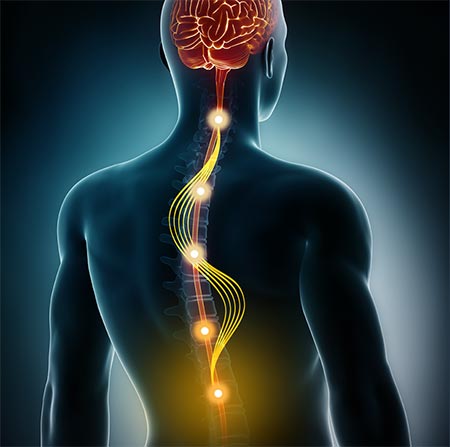A spinal cord stimulator is an electrical unit that is inserted into the back and delivers impulses to relieve pain. The device comes with some complications as does any surgical procedure. Complications are rare but patients need to be aware of the possible problems that can occur during and after the procedure.
Complications that can occur with any surgical procedure include:
- Infection
- Bleeding
- Headache
- Allergic Reaction
- Spinal Fluid Leakage
- Paralysis
Common complications and possible complications include:
- Increased local site pain – the site must adjust to the implant so there may be pain for approximately 2 weeks post surgery.
- Paralysis – individuals with genetic blood clotting problems could have some paralysis due to leakage of blood into the spinal canal which squeezes the spinal cord. Damage to the spinal cord is not reversible.
- Leaking spinal fluid – spinal fluid can leak around the implant site and lead to headaches. Non-carbonated caffeine drinks help alleviate the headaches but, if headaches continue, inform the surgeon.
- Nerve Damage – Needles and electrodes inserted into the spinal cord can cause damage and lead to paralysis.
- Pneumothorax – inserting needles in the upper back can cause lung collapse.
- Allergic Reactions – Dye or medicines used during surgery may cause allergic reactions.
- Anaphylactic Reaction
- Seroma – Fluid may build up around the device site and remain for several months. This fluid can cause infection. Immediately report suspected fluid to the doctor so it may be drained.
- Device Failure – technical problems can make the unit useless and removal would be required.

Spinal cord stimulation is effective for chronic back pain. Patients should be aware of possible complications. However, the complications are rare.
In addition, there are some risks that are specific to the spinal cord stimulator. These may include:
- Spinal cord stimulator stops working or only works intermittently
- impulses occur in the wrong area
- The unit over-stimulates
- A lead moves or is damaged
- Poor unit connection
There are numerous benefits as well, including:
- Allows you control of your pain relief
- The system is portable. Usual daily life activities at home and at work can be resumed.
- Pain relief travels with you and is available as needed when traveling.
- Recreational activities such as walking, swimming, and gardening may be resumed.
- Alleviating pain has a positive effect on mental outlook, decreases stress, and improves quality of life.
Spinal cord stimulators use electric impulses and magnets. There are some precautions to keep in mind including:
- Driving or use of heavy equipment should be avoided while the unit is activated.
- The unit may set off metal detectors like in an airport. A special identification card is required to get through such check points.
- Anti-theft devices can temporarily increase stimulation if the unit is on when you walk through. This can be unpleasant but does not harm the unit. It’s best to turn off the unit beforehand.
- When flying, the unit may be required to be turned off during take off and landing.
- Cell phones, portable phones, computers, TVs, microwaves, and other appliances are safe to use with the unit and it should not cause interference.
- Bank cards, credit cards, videos, audio cassettes, and computer disks, watches and clocks may be damaged due to the magnet on the unit. These items should be stored approximately two inches away.
